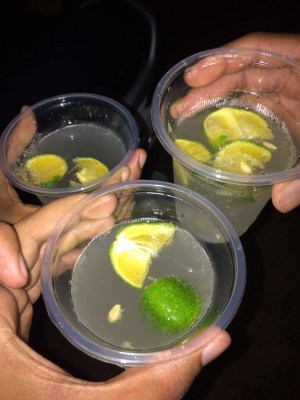Panaji, March 5 : To a Goaphile, the first signs of summer in the coastal paradise have little to do with the obvious change in weather.
The advent of summer in Goa can be gauged by the aroma wafting through the doors and tiny windows of traditional taverns or from those hundreds of makeshift distilleries which crop up near cashew plantations, brewing the season’s urrak.
This single-distilled cousin to feni is the pride of every bar and tavern worth its salt in Goa, once the sun sheds its temperate winter skin.
“Being a seasonal fruit, urrak is distilled in the months of March-April and is best consumed fresh. Locals prefer urrak over any other liquor brands, as it is exclusively available during this time of the year and people eagerly wait for its arrival. The best way to have urrak is with a lemonade or Limca and a dash of lime and chilly,” says chef Sandip Madkaikar, assistant professor – Food Production at V.M. Salgaocar Institute of International Hospitality Education.
The cashew plant was introduced to Goa by the Portuguese in the 1700s and believed to be shipped across the oceans from Brazil. Native Goans, according to former secretary of the Goa chapter of the Botanical Society of Goa India, Miguel Braganza, have been swilling the brew squeezed out of heady cashew-apples since.
“The cashew was introduced in Goa in 1740. Goans have been drinking urrak from the late 1700s,” says Braganza.
Its modest price — Rs. 200 for a one litre bottle, the heady high and its alleged penchant for not inducing hangovers, makes it a favoured summer drink, to beat the temperatures, once they soar through March until May.
“The taste is subjective, you have facets like bouquet, taste, strength that are variable… which is why we actually have a developed practice of urrak etiquette that you have the right to taste the urrak before you drink it,” according to Hansel Vaz, founder of Cazulo Premium Feni.
A good urrak, he claims, has to be cloudy and emit the aroma of a fresh cashew apple.
According to chef Manjunath Naik, professor at Kamaxi College of Culinary Arts, the aroma should be fruity, but the drink should not have an overtly alcoholic edge.
Braganza says the finer notes of a good urrak can be felt at the tip of one’s tongue.
“You can spot good urrak by the bouquet of its smells and by taste buds at the tip of the tongue. It’s sweet, sour, bitter. The tip of your tongue has to tell you all,” he says.
The best urrak is often sourced from Goa’s hinterlands, especially areas like Valpoi, Pernem regions, which abound in organic cashew cultivation and where distillation methods and practices are still traditional.
The flip side about the popular drink however, is its lack of shelf-life — you can rarely buy it after the summer.
“It has tiny flakes of the cashew apple in it, which tend to sour, if it’s stored for too long. Urrak has to be consumed fresh,” says Clement Mark DeSylva, a master blender for ‘Aani Ek’ infused feni and a feni evangelist himself.
Disclaimer: This story is auto-generated from IANS service.

